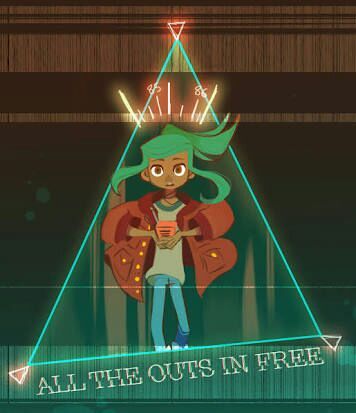

When setting out to make the game, Night School Studio wanted to challenge a much used mechanic in gaming: the dialogue cutscene. It is the conversational system, however, the sets Oxenfree apart the most from other adventures. These paranormal frequencies lead to more and more disturbing activity, some of which manifests onscreen to incredible effect. By tuning into certain frequencies on Alex’s small radio, the character can not only find entertaining sound clips and clues, but can also tap into the unknown.

While some items of interest appear by entering their proximity, others require more work. Through exploration and choices in dialogue, the player gains access to new clues and areas of the world.

On the surface, Oxenfree appears to be like any other adventure game. By making various dialogue choices, friendships can be bolstered or destroyed as you try to solve the mystery of the island and make it through the night. While you only control Alex, she is joined by four other high schoolers: Jonas (her newly acquired step-brother), Ren (her best friend), Clarissa (the popular, mean girl), and Nona (the shy one). In Oxenfree, you play as Alex, a teenage girl who is partaking in the annual tradition spending the night on the desolate Edwards Island. It promises a light-hearted coming of age tale-teens out to embark on some mischief-but no sooner do you get your first taste of fun, that curious phenomena begin. The characters are simple and bright, and effortlessly banter about their school hijinx. Taking hints from horror staples like Poltergeist, Oxenfree excels in its ability to immediately disarm you. There was something-just behind Oxenfree’s gorgeous visuals-that welcomed me in like the Overlook to Jack Torrance. It wasn’t just the fact that I have spent time on the foggy waters of Puget Sound, or that adventure games used to be my jam. When Oxenfree first faded onto the screen, something rang familiar.


 0 kommentar(er)
0 kommentar(er)
